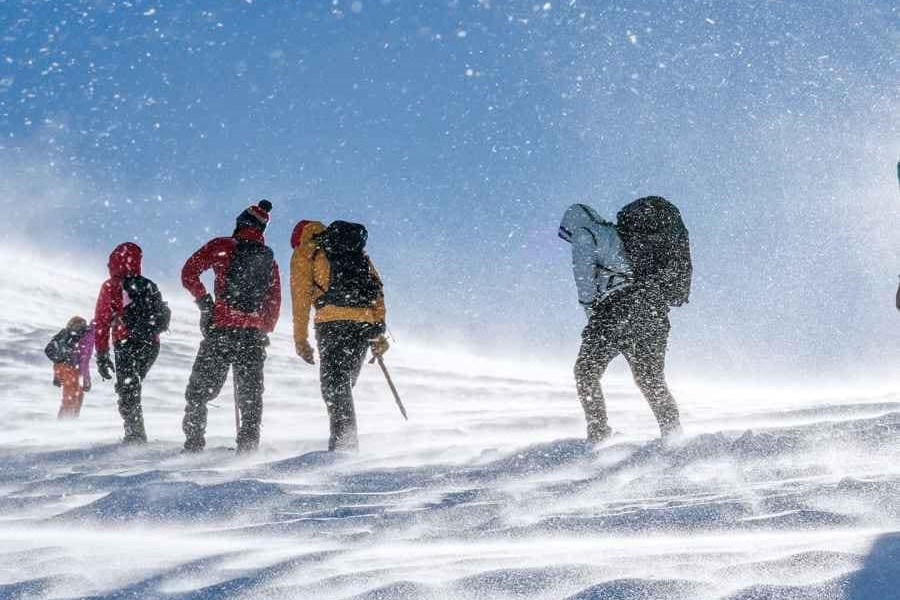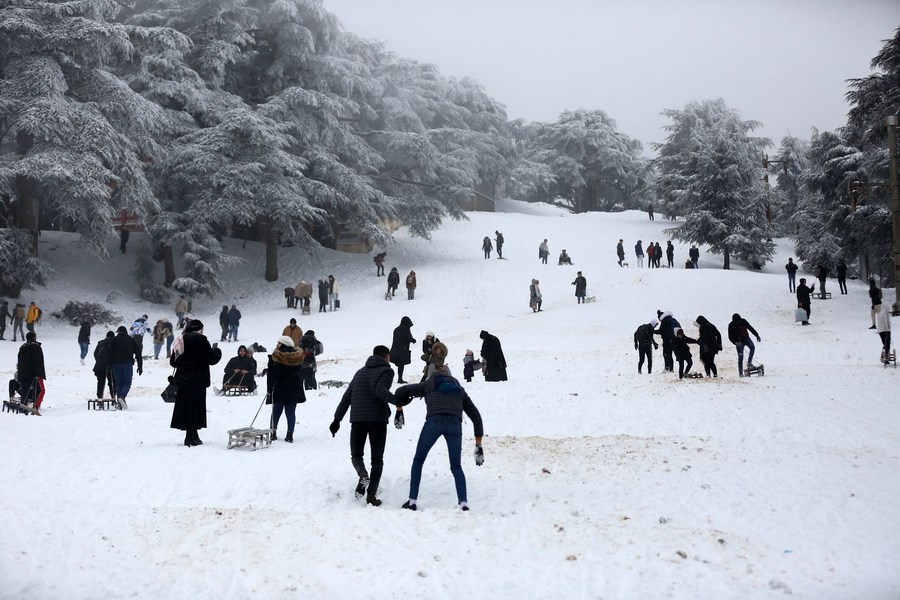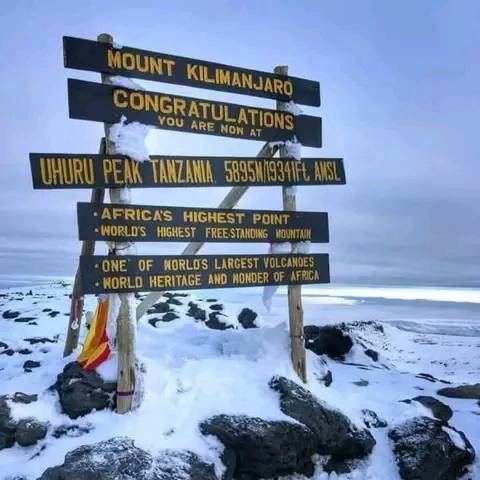Photo source: Facebook / VisitLesotho
What’s the first thing that springs to mind when you consider Africa’s climate? For many, it’s scorching sun all year round, arid deserts, tropical coastlines, and maybe some savannah adventures. It’s quite easy to live your whole life assuming that the continent is universally hot, but in reality, the climate is much more diverse than the stereotype suggests.
Forget everything you thought you knew about the weather in Africa. Many are unaware of a surprising side of the continent – snow. It’s a side of Africa many never see, but one worth knowing. When you think about snow, Africa isn’t exactly the first place that pops into mind. Though quite rare, a few regions, primarily in high-altitude areas, experience snowfall due to their varied geographical features and climate zones.
From the lofty heights of Kilimanjaro to the mountains of South Africa and beyond, the rare sight of snow adds a touch of winter magic to the African landscape.
Here are a few of the countries in Africa that experience snow:
Lesotho
One of the few African countries where snowfalls occur much more frequently is Lesotho. This kingdom, surrounded entirely by South Africa, has some of the highest peaks in Africa, making it easy for snow to occur. Often referred to as the “Kingdom in the Sky,” for obvious reasons, it is the only country in the world where every square meter of land is situated at an altitude of more than 1,000 meters (3,280 feet) above sea level.
Its mountainous and high-altitude terrain ensures that its winter season, which is from June to August, is cold enough for snowfall, and the country often experiences temperatures around 0 degrees Celsius during this time.
According to reports, snowfall plays an important role in Lesotho’s water supply by replenishing rivers through snowmelt. This year, Lesotho experienced an early and heavy snowfall.
If you thought you could only go skiing and snowboarding in Europe and North America, you are wrong. Lesotho has the highest ski resort in sub-Saharan Africa, one of just a handful on the continent. Afriski, situated 3,222m above sea level, attracts visitors from Africa and beyond.
South Africa
South Africa, a country with many different landscapes, is mostly warm and temperate, but certain regions experience snowfall during winter (June to August). Parts of Johannesburg’s Gauteng province, the Drakensberg Mountains, Eastern Cape Highlands, and parts of the Western Cape are among the areas where snow is most likely to occur, with temperatures diving below 0°C (32°F). These regions can transform into icy landscapes, showcasing a different side of South Africa’s climate.
Other parts of the country experience seasonal snow, which is a rare occurrence. One such occurrence was in November 2024, when South Africa experienced its first major November snowfall in 85 years. The snowfall resulted from a ‘cut-off low’, a low-pressure system known for bringing cold air, heavy rainfall, and snow.
Just like Lesotho, South Africa was also hit by heavy snow, rain, and gale-force winds in June 2025. According to news reports, the snow created unsafe driving conditions and prompted closures of several sections of highway.
If you want to see snow, head to the Drakensberg Mountains, which are particularly well-known for their snowy peaks during winter. People often go there to take photos in the snow and go sledding.

Photo source: Facebook / Visit Agadir Morocco
Morocco
If you thought Morocco couldn’t be on your list of travel destinations to experience snow, think again. Due to its location near the Atlantic coast, Morocco enjoys a varied climate, which includes snow and cold weather. Yes, it does snow in Morocco, but only in certain regions like the Atlas Mountains, particularly the High Atlas and Middle Atlas ranges, offering breathtaking views of snowy peaks during the winter months (November to March).
The High Atlas region is particularly renowned for its snowfall due to elevations exceeding 4,000 meters (13,000 feet). Skiing enthusiasts often flock to resorts like Oukaïmeden near Marrakech to enjoy winter sports.
The town of Ifrane, often referred to as “Little Switzerland,” also enjoys snowfall, making it a popular destination for locals and tourists during snowy seasons.
In January 2025, some regions were affected by significant snowfall, which was brought by cold air masses from Northern Europe.
Read also: A Moroccan Woman’s Journey To Reach The Seven Summits: Bouchra Baibanou’s Inspiring Story
Algeria
Snow is a rare sight here due to the dry and desert-like climate, but when it does occur, it is a welcome relief from the scorching heat of the world’s largest hot desert. Part of Algeria is home to the Small Atlas Mountains, where snowfalls can occur during winter.
In 2018, Ain Sefra, a desert town in Algeria known as the “Gateway to the Sahara,” experienced a substantial amount of snow. In January 2025, the town experienced the same rare and unexpected sight.
In 2023, other desert provinces, including Ghardai, Bechar, and Blida (where Chrea National Park is located), witnessed snow.

Photo source: China Xinhua News
Uganda
Uganda’s Rwenzori Mountains, often called the “Mountains of the Moon,” are the only place that experiences snow. The top of the mountains often remains covered in snow and glaciers, and some travelers hike up to see the snow while others prefer to just admire the rare sight from down below.
Although the summits of the Rwenzori Mountains remain snow-covered, the glaciers and snowfields are slowly diminishing, thanks to climate change. The ice field has reportedly shrunk from 6.5 sq km in 1906 to less than one sq km in 2003, and could completely disappear before the end of this decade, research shows.
Tanzania
Although the snow is not widespread throughout Tanzania, one of the places where you can experience this rare sight is Mount Kilimanjaro, the highest mountain in Africa. The summit of the mountain can get extremely cold with arctic temperatures and snowfall during Kilimanjaro’s dry season, which runs from mid-June to October, but the most snow is during the month of December.

Photo source: Kendrick Alphonce
It is also not unusual to see snow on the top of Mount Meru during the rainy season. However, there are no glaciers, and therefore it does not take long for the strong equatorial sun to melt the snow away.
However, snow at the summit of Kilimanjaro is becoming increasingly rare due to climate change.





